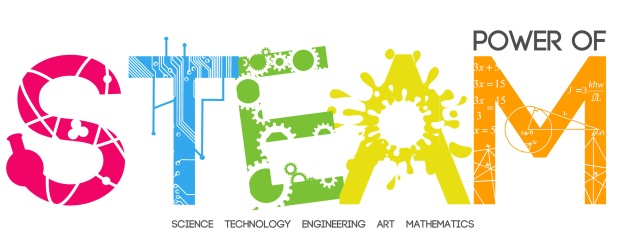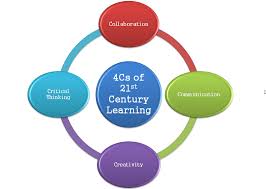In this padlet we will be brainstorming expected STAR behavior in the STEAM Lab.
What behaviors do you think should be expected in the STEAM Lab?
Discuss with you group and add 1 suggestion for each STAR category.

In this padlet we will be brainstorming expected STAR behavior in the STEAM Lab.
What behaviors do you think should be expected in the STEAM Lab?
Discuss with you group and add 1 suggestion for each STAR category.
In this Kindergarten STEAM unit, students worked with a partner to make a monster out of glow-in-the-dark beads and pipe cleaners. Then, they were challenged to make a shelter for their monster that would be worth I’d be dark enough to make the monster glow! Students reused recyclable materials like milk jugs, tissue boxes, cardboard tubes, newspaper and egg cartons to build their monster homes. Students tested their design and made improvements!
In 6th Grade students were reading about natural disasters, so in STEAM they were challenged to create a model of a skyscraper that could withstand a 10 second earthquake simulation. Their structure also had to securely hold an egg. They used marshmallows, uncooked spaghetti and masking tape. (They could not tape their egg to their structure). They had to “purchase” their materials and had to stay within their budget of $4,875. Spaghetti was $100 per noodle, marshmallows were $50 a piece and masking tape was $25 per inch. Students had to write checks and complete purchase orders. They also had to decide whether or not they wanted to purchase insurance prior to construction in case of catastrophic loss. This unit incorporated the 4 C’s of 21st Century learning, collaboration, communication, critical thinking and creativity. Students also had to be resilient and adopt a Growth Mindset when faced with challenges and set backs. See how they did in the video below:
During the 1st Nine Weeks we will be emphasizing concepts such as, growth mindset, design thinking, habits of mind and the 4C’s of 21st century learning, Collaboration, Critical Thinking and Communication. Below is an overview of the projects we will be doing this nine weeks!
Kindergarten: Students will be completing nursery rhyme STEAM challenges! Our first challenge is to build an egg protector for Humpty Dumpty!
1st Grade: Students will be designing and building houses for the 3 Little Pigs. We hope to make a movie using our houses.
2nd Grade: Students will be creating pet rocks and designing playground equipment that can hold their pet rocks.
3rd Grade: At Economy, students will learn about simple machines and the kinetic artist, Rube Goldberg. Students will design and create their own “Rube Goldberg” machine. While students at State Street will design and create inventions with Little Bits, electronic building blocks that snap together.
4th Grade: Students will be learning about Forces and Motion through the Hotwheels Speedometry curriculum.
5th Grade: Students will be researching Native Americans and they will design and create models of Native American dwellings.
6th Grade: Students will be researching earthquakes and they will design and create a structure. They will test their structure to see if it could withstand an earthquake.

STEAM stands for Science, Technology, Engineering, Art and Mathematics. In the STEAM lab, students will connect their learning from all subject areas through cross-curricular projects. Our projects will be aligned to the PA Core Standards and will draw on inspiration from our McGraw-Hill Reading and Math series so that students will connect not only what they are learning in Science in Math but also in Reading and Language Arts. We will strive to make real-world connections and provide authentic learning experiences for students.
In the STEAM lab we will emphasis a Growth Mindset, and promote positive Habits of Mind. The STEAM lab will be a place where students are encouraged to make mistakes so they can learn and grow. We want to establish a classroom environment that gives students the freedom from fear of failure.
Here is a video that explains Growth Mindset:
Watch this video to learn about the 16 Habits of Mind:
In the STEAM Lab students will utilize problem-solving and higher order thinking skills. We will also promote the 4C’s of 21st Century Learning: Collaboration, Creativity, Communication and Critical Thinking
.
Watch this video to learn more about the 4 C’s: